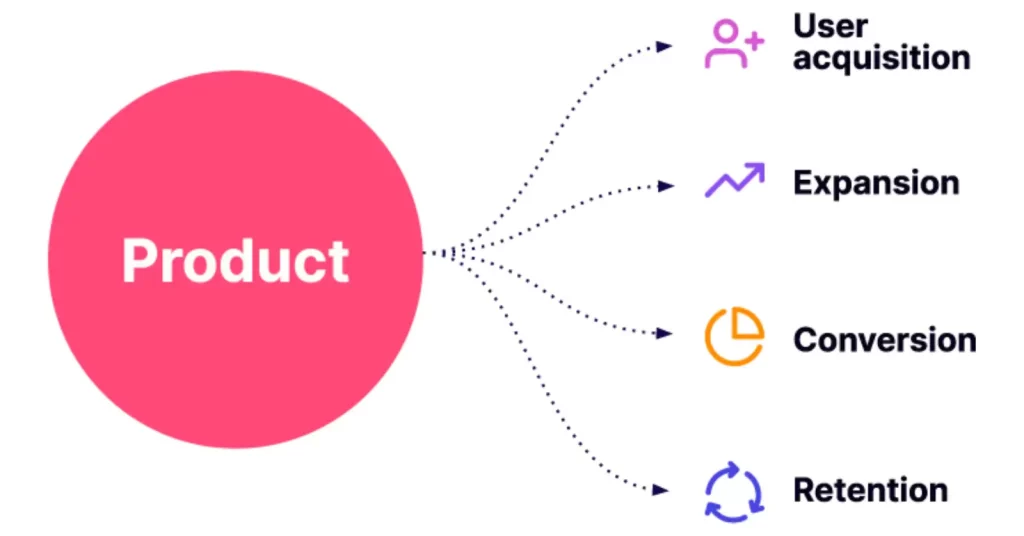Content marketing in today’s digital age is getting important in attracting and engaging audiences. With this emerging approach, Product-Led Content gets more attention. The best services product-led offer is that it puts the product or service at the forefront of the content strategy.
While traditional content marketing only focuses on brand promotions. Today we will explore product-led content, its benefits, examples, challenges, and how you can create it. We will also explore the tools that play a vital role in creating product-led content.
Product-Led Content: What Is It?
For our concern about product-led marketing, let’s discuss what it is. Product-led content is a strategy for marketing that provides information and education and engages the right audience. It works by showcasing the value and capabilities of a product.

It involves creating content that aligns with the product’s features, use cases, and benefits, providing potential customers with valuable information and insights. The priority of this strategy is to set the product as the central element, focusing on its functionalities, unique selling points, and the problems it solves.
Examples of Product-led content
Ahrefs, Zapier and BearBrand, are some examples of product-led content.
Why is Product-Led Content Useful?
We have discussed Product-led content, and we should consider why we must use it. How can it benefit us? You should use it because it’s a business strategy to gain trust, think leadership, and generate leads.
It focuses on potential customers and helps them to solve product-related problems. Additionally, it allows businesses to establish credibility. Companies can provide expertise within their niche.
Key Benefits of Product-Led Content:

Here are some critical benefits of product-led content to help us decide. Why should we choose it?
Communication With Potential Customers:
You can showcase your products using this strategy and features through your content. With this strategy, businesses can communicate with potential customers, which lead to higher conversion rates.
Enhanced User Experience:
The product-led offers a seamless user experience by providing valuable information and resources. They can align with the product’s functionalities. It helps customers make decisions and provides a facility for positive brand perception.
Improved Customer Education:
By focusing on the product’s capabilities, product-led content educates potential customers about maximizing the benefits and potential applications of the product or service, leading to greater customer satisfaction and loyalty.
Targeted Marketing Approach:
Product-led content enables businesses to target specific audience segments, addressing their unique pain points and needs. This approach ensures the content resonates with the right audience, increasing effectiveness
Competitive Advantage:
By effectively showcasing the product’s value and differentiators, product-led content helps businesses differentiate themselves from competitors and position their offerings as the superior choice.
How Do I Create Product-Led Content?
To create impactful product-led content, follow these steps:
Understand Your Audience:
First, you need to know about the audience before creating product-led content. What type of audience do you need? What does your audience need needs? You need to do thorough research to target your audience.
Product Features:
The second step involves highlighting the critical features of the product. Focus on the functionalities that resonate with your audience’s pain points.
Try Content Formats:
Try a different format for the content, including blog posts, videos, case studies, etc. This will help you to learn different styles.
Tell Compelling Stories:
To engage with your audience and build a healthy relationship between you and your audience, you need to incorporate storytelling elements into your content.
Optimize keywords:
Make sure that the product you are marketing is optimized for search engines. You optimize your product with relevant keywords, backlinks, and Meta tags. This process increases visibility and organic reach.
Tools Used To Create Impactful Product-Led Content:
Here are some tools that can help you create Product-led content.
Narrator – Content Collaboration Tool:

Narrator streamlines cross-functional collaboration between marketing, sales, and product teams by offering a comprehensive content collaboration tool. It allows you to manage the entire content workflow on one platform, eliminating the need for multiple apps and tools.
Poll the People – Tool for Customer Insights:
A tool that quickly gathers valuable customer insights for your product is the Poll the People tool. It offers user-friendly templates for testing different aspects, enabling data-driven decisions in a cost-effective and time-efficient manner
There are also more tools available in the market for SEO optimization, Video Creation Tools, and graphic design tools that can help you to showcase your product.
Challenges with Product-Led Content:
Here are some challenges associated with Product-led content.
Generating Engaging Content:
Create content that captures and maintains your audience’s attention requires careful planning, creativity, and storytelling techniques.
Keeping Up with Product Updates:
Updating and maintaining accurate and up-to-date content can be time-consuming as your product evolves and new features are introduced.
Measuring ROI:
Dermining product-led content’s return on investment (ROI) can be complex, as it may not directly result in immediate conversions. However, tracking engagement, lead generation, and customer satisfaction metrics can provide valuable insights.
FAQs:
Product content is any information or material that describes and showcases the features of the product, benefits, and specifications.
Examples of content-led marketing include blog posts, articles, infographics, videos, podcasts, and social media content that provide valuable information, insights, and entertainment to the target audience.
Product-led strategies are essential because they lead to shorter sales cycles. Allowing users to onboard themselves can significantly reduce the time-to-value and sales cycle for prospects.
Conclusion:
In sum, the Product-led content offers a practical approach to marketing by putting the product or service at the forefront of the content strategy. Businesses can effectively educate and engage potential customers by showcasing the product’s value, features, and benefits, increasing conversion rates and customer satisfaction.
While challenges exist in creating and measuring product-led content’s effectiveness, its benefits make it a valuable strategy for businesses aiming to stand out in a competitive marketplace. By leveraging the right tools and understanding their audience, companies can create impactful product-led content. It drives growth and establishes their brand as a trusted authority in their industry.

Leave a Reply